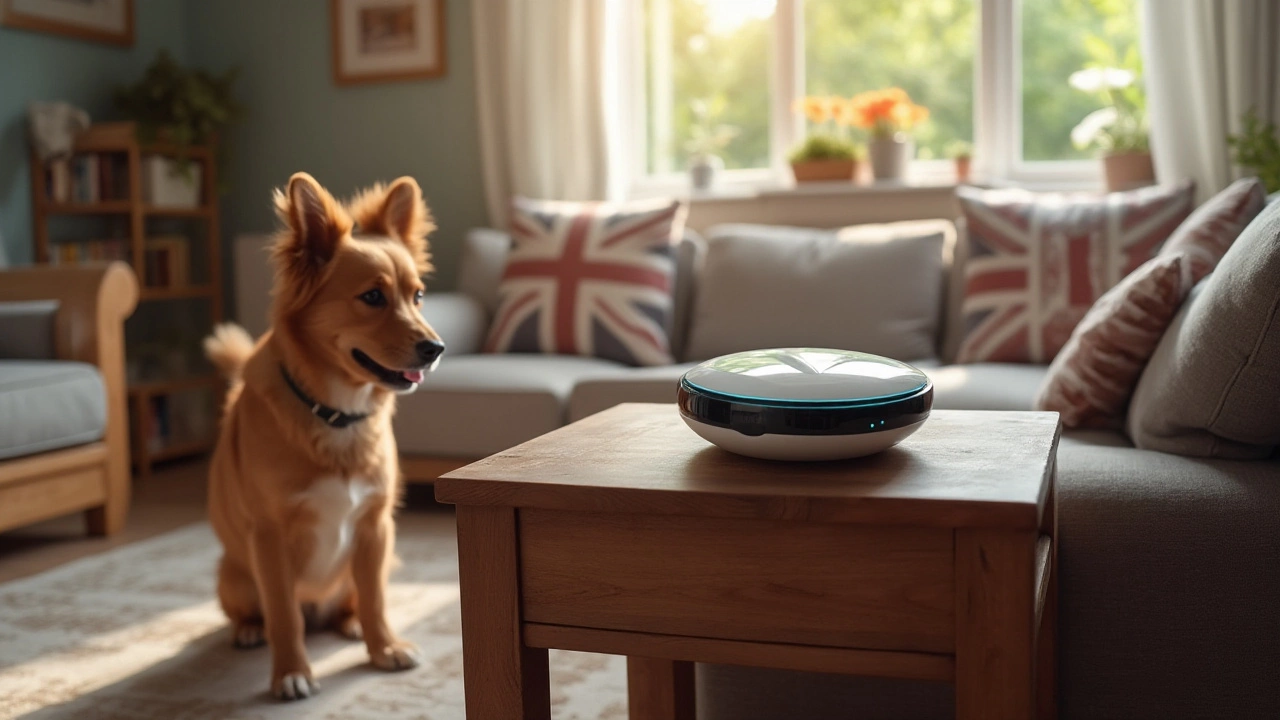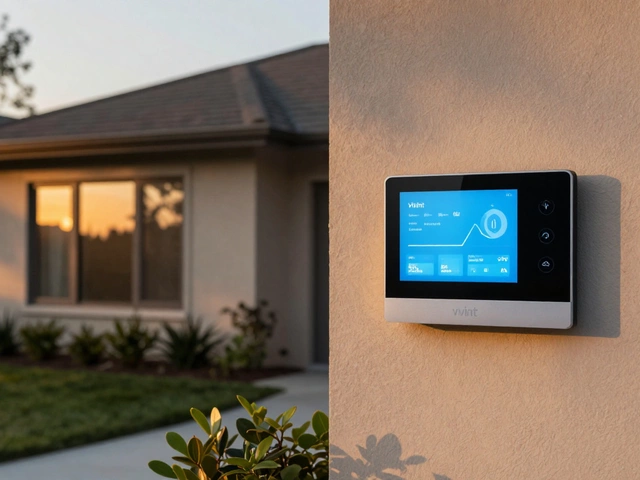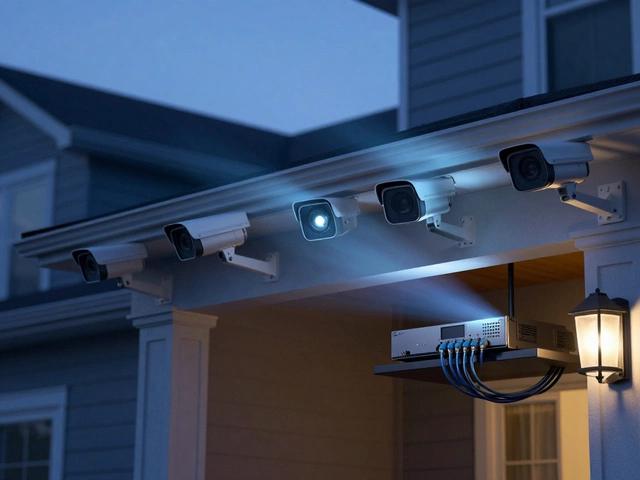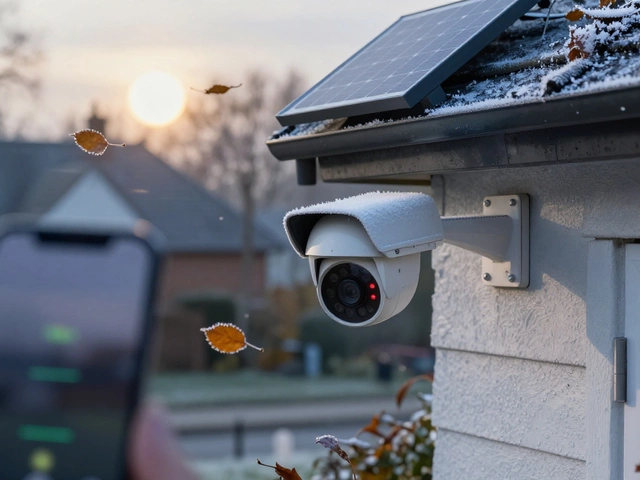Dog barking is a natural means of communication, but sometimes it can become excessive and challenging to manage. Fortunately, modern technology offers a variety of devices to help train your furry friend without compromising their comfort or well-being. These gadgets provide pet owners with non-invasive ways to address persistent barking.
This article explores different types of bark control devices, each designed to make life more harmonious for both you and your pet. Whether you're dealing with a particularly vocal breed or a pooch that’s lately discovered the joy of barking, there's a solution to suit your needs.
- Understanding Dog Barking
- Types of Bark Control Devices
- Ultrasonic Devices
- Collars: Vibration and Spray
- Tips for Effective Use
Understanding Dog Barking
At its core, barking is an essential mode of communication for dogs, much like how humans rely on speech. Each dog has a unique way of barking, which can convey various emotions or signals. Some dogs bark out of excitement, while others might do so to alert their owners of potential dangers or simply to grab attention. It's crucial to decipher the context and motivation behind the barking to effectively manage or mitigate it. Different breeds also have varying propensities to bark; for instance, Beagles and Terriers are known for their vocal nature, while breeds like the Basenji are relatively quieter. This behavior can be shaped by both genetic and environmental factors.
It's fascinating to note that dogs use barking to express loneliness or separation anxiety. Often, a dog left alone for long hours may resort to barking as a way to cope with stress. Noise sensitivity is another trigger. A dog might bark in response to sounds that humans might not easily notice, such as distant thunder or even high-frequency noises. It's a natural instinct deeply rooted in a dog's protective nature.
According to a study from the University of California, barking can have distinct intonations and frequencies that dogs use to communicate different messages. "Dogs can intuitively sense their owner’s feelings which influences their barking patterns," the study notes. This interspecies connection highlights the importance of understanding your pet's vocalizations as part of responsible pet ownership.
To effectively address the habit of excessive barking, identifying its root cause is vital. Observing when and why your dog barks can offer valuable insights. It can be helpful to maintain a journal to track the conditions and contexts under which barking occurs. This can lead to discerning patterns and triggers, ultimately guiding the choice of an appropriate approach or device to control barking. This understanding ensures that any intervention, whether a training method or tool, aligns with the dog’s emotional needs and behavioral tendencies.
Types of Bark Control Devices
Exploring the world of dog barking solutions reveals a fascinating array of dog barking devices designed to cater to different needs and environments. From cutting-edge technology to age-old techniques, these tools are crafted not just to silence your pet but to educate them on when such vocal displays might be unnecessary. One of the first categories to consider is ultrasonic gadgets. These devices emit sounds at a frequency only dogs can hear, offering pet owners an invisible shield against incessant barks. Interestingly, studies have shown that these devices are about 80% effective in reducing dog barking, supporting environments where silence is golden. You might liken them to an invisible fence, gentle yet firm—a dog’s ear catches the subtle frequency, and with training, they associate the sound with the need to halt their barking.
Stepping into the realm of wearable solutions, we find collars. These come in various types, two of which stand out due to their efficacy and humane nature: vibration and spray collars. Vibration collars offer a tactile method of interruption. When a bark is detected, the collar vibrates subtly, akin to a cell phone on silent mode. It calls the dog’s attention to their bark, without inflicting discomfort. On the other hand, spray collars release a harmless mist, often infused with citronella. Some dogs detest this scent, making the spray a clever deterrent. Both types require consistent and patient training, as they rely on creating a behavioral association.
Delving deeper into ultrasonic gadgets, these handy tools can be portable, resembling a remote or fixed like a wall-mounted unit. The versatility allows them to be suited to both indoor and outdoor settings, thus broadening their applicability. However, keep in mind that certain environmental factors, like distance and obstacles, might affect their performance. As pet experts suggest, the key is consistency; using these devices alongside positive reinforcement often yields the best results. This amalgamation of learning styles ensures an enriched learning atmosphere for your furry friend.
“A well-trained dog is not only a reflection of the diligent efforts of its owner but also a testament to their mutual understanding and bond,” says renowned animal behaviorist Dr. Grace Callahan.
For those intrigued by technology’s edge, seek the gadgets with feedback features, allowing you to adjust intensity levels or monitor usage patterns. While a higher-tech solution might carry a heftier price tag, many pet owners find the investment worthwhile. Of course, each dog is unique, and a device that works wonders for one mightn't yield the same success with another. Therefore, it is important to assess and identify which dog training tools best resonate with your canine companion's personality.

Ultrasonic Devices
Ultrasonic devices have gained significant popularity among pet owners seeking solutions to curb excessive barking. These gadgets operate by emitting high-frequency sounds that are imperceptible to human ears but can easily capture a dog's attention. The concept behind these devices is to alert the dog to stop barking without causing any harm, making them an ideal choice for those who prioritize humane approaches in dog training.
These dog barking devices work simply: when the dog barks, the device releases an ultrasonic sound that interrupts the barking, effectively training the dog to associate quiet moments with silence from the device. It's a form of negative reinforcement that doesn't rely on harsh methods. One of the most often-celebrated features of ultrasonic bark controllers is their ability to adapt to various environments—be it indoors or outdoors. This adaptability means you can enjoy peace both at home and during strolls at the park.
The affordability and ease of setup make ultrasonic devices an attractive option for many. Most models are battery-operated, which simplifies portability, enabling users to move them to any affected area without hassle. Some even feature remote controls, which allow corrections from a distance. Notably, many models come complete with LED indicators to inform you when the battery needs replacing, thus ensuring they remain operational at critical moments.
"The beauty of ultrasonic bark controllers lies in their simplicity and wide applicability," says Dr. Emily Carter, a renowned animal behaviorist. "They're not only effective but provide a peaceful solution without disturbing the household environment."
Different models of these ultrasonic emitters exist. Some are handheld for personal use, while others are stationary, designed to be mounted in a desired location. The market offers diversity—in terms of range, sound intensity, and features—that caters to the specific needs of dogs varying in size and sensitivity. While smaller breeds might respond to lower frequencies, larger dogs could necessitate devices with a wider reach.
Users are often encouraged to observe their pet closely when first introducing such a device. Ensuring the dog isn't startled and responds appropriately to the sound is crucial in adjusting the intensity for optimal results. Regular maintenance and checking for any signs of wear and tear can extend the device's life, benefitting both the pet and the owner's investment. The humane approach, alongside these practical aspects, certainly contributes to why ultrasonic barking devices remain a favorite among pet lovers.
Collars: Vibration and Spray
When considering methods to curb excessive barking, vibration and spray collars emerge as popular options for many dog owners. These collars offer an innovative approach by delivering gentle, non-harmful cues that distract the dog and help redirect its focus. Unlike shock collars, which have long been criticized for their harshness, both vibration and spray varieties prioritize a humane correction technique. Vibration collars operate using small motors that vibrate when activated; the sensation is similar to a mobile phone's buzz, aiming to capture the dog’s attention without causing distress. Spray collars work by releasing a harmless burst of mist, often citronella-scented, under the dog's snout, distracting the dog from barking and making them hesitate before starting again. Many pet owners find these collars to be a welcome alternative to more controversial methods.
The intricate workings of these devices play a significant role in their efficacy. Vibration collars often come equipped with adjustable settings, allowing owners to tailor the level of vibration based on their dog's temperament. This personalized feature ensures that the device remains effective without becoming overwhelming. Similarly, spray collars often include a refillable canister for mist and a sensor that detects barking, triggering an immediate release. This quick response time is crucial in training, as it closely associates the action (barking) with the consequence (spray or vibration).
It's essential to consider the pros and cons of these devices before making a purchase. On one hand, they are widely praised for their humane approach. Dogs respond without fear or anxiety, which can arise with harsher methods. On the flip side, their effectiveness can vary based on the dog's size and barking motivation. A study conducted by the Humane Society found that spray collars tend to be more effective for dogs with low motivation to bark. On the other hand, highly motivated barkers might not be deterred by a simple mist or vibration. Ultimately, a dog's individual personality plays a significant role in how they respond.
Ease of use is another factor that makes these collars attractive. Most vibration and spray collars are battery-operated with user-friendly controls, making them accessible even for first-time users. They often come with instructional manuals or support from the manufacturer, ensuring that pet owners can set them up with ease. The simplicity of these devices means that users can quickly start seeing results if the collars are used consistently and correctly. Despite their ease, it’s crucial to remember that any training tool works best when combined with patience and positive reinforcement strategies.
Cost and maintenance should also be considered. While these collars are generally affordable, ranging between $30-$100, the long-term expenses include battery replacements and spray refills. An informed decision comes from weighing these costs against the potential benefits. Some owners find the expenses worthwhile for the peace they bring to a household. It’s worth researching and comparing different brands and models, as features can vary significantly. Product reviews from other pet owners can provide insight into real-world performance and reliability.
According to Dr. Jessie Kalvert, a renowned animal behaviorist, "Vibration and spray collars can be effective tools when used appropriately. They offer a humane form of correction that often suits sensitive dogs or those prone to fear responses." This assertion highlights the importance of understanding a device’s place within broader training efforts. Responsible collar use ensures they contribute positively to both a dog’s behavior and their relationship with its owner.
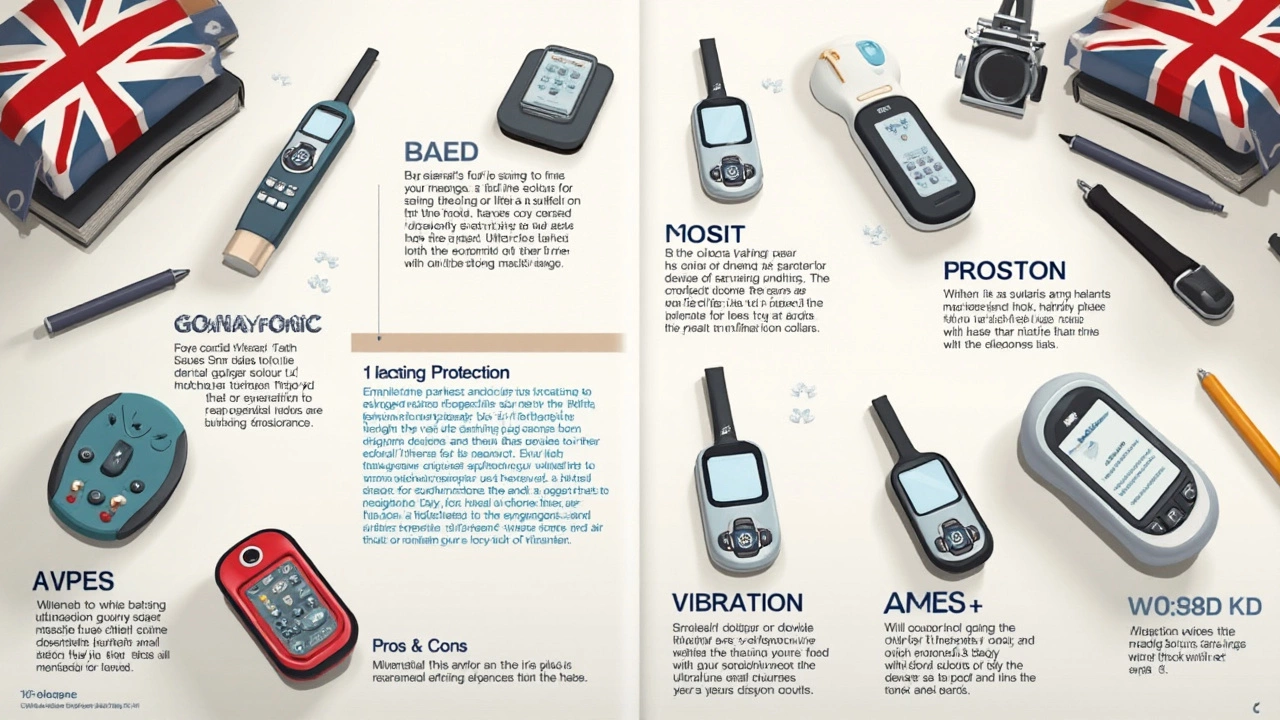
Tips for Effective Use
When embarking on the journey to control dog barking, using the right tools is crucial, but the approach you take is equally important. Consistency and patience play a big role in making any device effective. Always start by understanding your dog's unique behavior patterns. For instance, some dogs bark due to boredom while others may do so out of anxiety or excitement. Tailoring the use of devices to suit these specific behaviors is key to success. It's essential to monitor how your dog reacts to any given device in the early stages. If you're using an ultrasonic device, observe if there’s a positive change in behavior. Dogs, like humans, differ in how they respond, and what works for one might not work for another.
Begin with the lowest settings available to ensure your pet's comfort and slowly adjust as needed. Devices like ultrasonic gadgets and vibration collars often have adjustable settings, allowing you to customize the experience. Let's say your dog starts off indifferent to the vibration of their collar; increasing the intensity gradually could help garner their attention more effectively. Similarly, with ultrasonic devices, ensuring it's placed within the correct range and adjusting the frequency can make all the difference.
Training aids should ideally be part of a broader strategy that includes positive reinforcement. When your dog exhibits desired behaviors—and refrains from barking—reward them. Such encouragement can be more powerful than any device. Treat-based rewards or affection can work wonders in reinforcing good behavior alongside technological aids. Never rely solely on a device; consider it a tool to complement your training efforts.
Creating a consistent routine is vital; dogs thrive on routine. Whether you're using a pet-friendly alarm, a vibration collar, or another bark control device, integrate its usage into your daily interactions with your dog. For instance, if your dog barks excessively when you leave home, try setting the device before your departure each day until they begin to associate your leaving with being calm and quiet. According to canine behaviorist Dr. Pat Miller, “Effective training begins with understanding your dog's needs and setting realistic goals.”
"Don't expect instant results; dog behavior modification takes time and understanding. Haste often leads to overlooking the core issues." - Dr. Sarah Brooks, Animal Behaviorist
Devices are often used improperly due to lack of owner education. Take time to read manuals, watch tutorial videos, or seek advice from professionals. Just like any other gadget or technology, understanding the settings, positioning, and best practices for your specific environment can dramatically impact effectiveness. Perhaps surprisingly, some studies suggest that improper use of devices can indeed exacerbate barking due to underlying stress.
Utilizing a bark control device is not just about the reduction of noise, but about ensuring a harmonious relationship between you and your pet. It's about fostering an environment where both you and your dog can thrive together with less stress. When devices are used effectively, it ultimately leads to a happier, quieter, and more balanced life for everyone involved. Considering these tips and incorporating them into your daily routine will help you make the most out of your chosen dog barking device.

